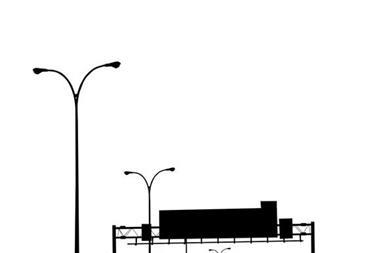With Norwich Union axing its scheme to charge drivers according to their car usage, the government’s road pricing strategy may falter.
Last week Norwich Union (NU) announced that it was to withdraw its pay-as-you-drive (PAYD) insurance policy from the market.
The news came as a surprise to the insurance industry. It had been less then two years since NU’s policy, seen as a flagship product, had been rolled out after a number of years in pilot.
Beyond the frustration for NU and its policyholders, the move has potentially wider ramifications, raising questions about the future of usage-based insurance – a concept that is still in its infancy.
The ripples of NU’s decision may even reach beyond the confines of the insurance industry to touch government policy. Ministers have been keeping a close eye on PAYD insurance and the telematics technology underpinning it as they formulate plans for a national road pricing strategy.
NU’s policy charged customers according to their use of the car, using satellite technology to track every journey via a black box installed in customers’ cars. It resulted in cheaper premiums for those driving occasionally and those that avoided high risk times such as rush hour.
So what went wrong? There were two key problems: first, too few customers signed up to the policy. NU had originally set a target of 100,000 but numbers fell well short of this. The company did not reveal how many had signed up, although reports suggest it was in the region of 10,000.
The second problem was the slow adoption of the technology by car manufacturers. NU originally envisioned that manufacturers would eventually install the telematics technology as standard into cars, for use for example with GPS tracking systems. This would have enabled NU’s policy to utilise technology already in the car.
But car manufacturers were not as quick to install the technology as NU had first thought. It was up to NU to fix the black boxes into customers’ cars, which was expensive. “In 2000, telematics was like a buzzword. But at the point of manufacture it has not evolved as much as we thought it would,” an NU spokesman says.
Some suggest that concerns over privacy had been a factor in the low take-up, with people unhappy at the idea of being constantly monitored.
Graeme Trudgill, technical and corporate affairs executive at Biba, told Radio 4’s Money Box programme: “The customers don’t like the whole Big Brother attitude. They don’t like the fact that someone is going to know exactly where they’re going, at what time and what speed as well.”
With NU currently suspending its involvement in PAYD, it leaves only RSA in the UK using telematics technology. The policy is not a true usage-based scheme as drivers are not charged by the mile, instead receiving a discount if they do not drive late at night.
RSA insists the scheme has been popular and that it has no plans to withdraw it.
Insurers such as Groupama and Allianz are trialling the technology in Europe. There is also interest in the US, Japan and South Africa. But NU was at the forefront of developing PAYD insurance and its decision to suspend its policy is seen as a blow to the concept.
“If NU can’t make it work with its infrastructure and penetration, other insurers will have an uphill struggle,” says Jack Brownhill, director of the World Motor Insurance Consultancy (WMIC).
James Tanser an analyst at actuary Watson Wyatt, says: “Over the past few years we have spoken to a number of insurance companies around the world about the possibility of launching their own version of this product.
“A number of trial schemes are either running or about to start, and they represent a significant outlay in technology and time from the sponsoring insurers. Given the news from Norwich Union, it is likely that interest will, for now, fall off rapidly.”
If interest in the PAYD concept does wane, younger drivers are likely to be the greatest losers, as the concept is seen as a way to make motor insurance for this demographic group more affordable.
Brownhill says: “Young drivers are generally poor risks, but some are good. PAYD would enable insurers to pick the good risks and block the poor risks as you get better analysis than traditional underwriting methods. The detail is much finer.”
The apparent lack of consumer interest in PAYD insurance also raises questions for government policy-makers looking at a national road pricing strategy.
Edmund King, president of the AA, says: “The government saw PAYD as a way for motorists to get used to using black boxes and paying by the mile. It was a psychological and technological trial. Now the government won’t have the benefit of looking at these. It puts road pricing back to square one.”
The Commons Transport Select Committee warned in March that motorists may reject PAYD road pricing as an invasion of privacy, although it supported the concept.
Last week, Transport Secretary Ruth Kelly told the BBC that she was still not convinced that the technology currently available could guarantee an effective road pricing programme. Trials of the technology will begin in the autumn.
There has been talk of the government effectively piggy-backing on insurers’ telematics technology to collect road tolls. Insurance Times reported last February that the ABI had set up a sub-committee to investigate how the insurance industry could fit into road pricing plans. But concerns around this have cooled.
An ABI spokesman says this week: “A year ago we had internal discussions on the implications for the insurance industry if government moved ahead with road pricing. It got no further than considering potential questions if PAYD was to be used for collecting data for a government scheme.”
He adds: “This is not top of the agenda and NU’s move has not moved it up the agenda.”
Meanwhile, Watson Wyatt’s Tanser argues that the concept of usage-based motor insurance is not dead. “GPS units are increasingly fitted as standard to vehicles, and some companies have started to include panic buttons and concierge services linked to these units.”
He says car manufacturers are looking to increase their service offerings, for example by automatically calling emergency services following an airbag deployment.
“Including car insurance in this type of offering may look like a small step, and so such developments may create an opportunity in the future to combine these technologies and relaunch the pay-as-you-drive insurance concept.”
Tanser also argues that if road pricing is introduced then as motorists become more used to being monitored, the concept of PAYD insurance will be more acceptable.
NU says its withdrawal from the PAYD market is only temporary. “We will take a look at the market place and re-enter when it makes more sense,” an NU spokesman says.
Hosted by comedian and actor Tom Allen, 34 Gold, 23 Silver and 22 Bronze awards were handed out across an amazing 34 categories recognising brilliance and innovation right across the breadth of UK general insurance.











































